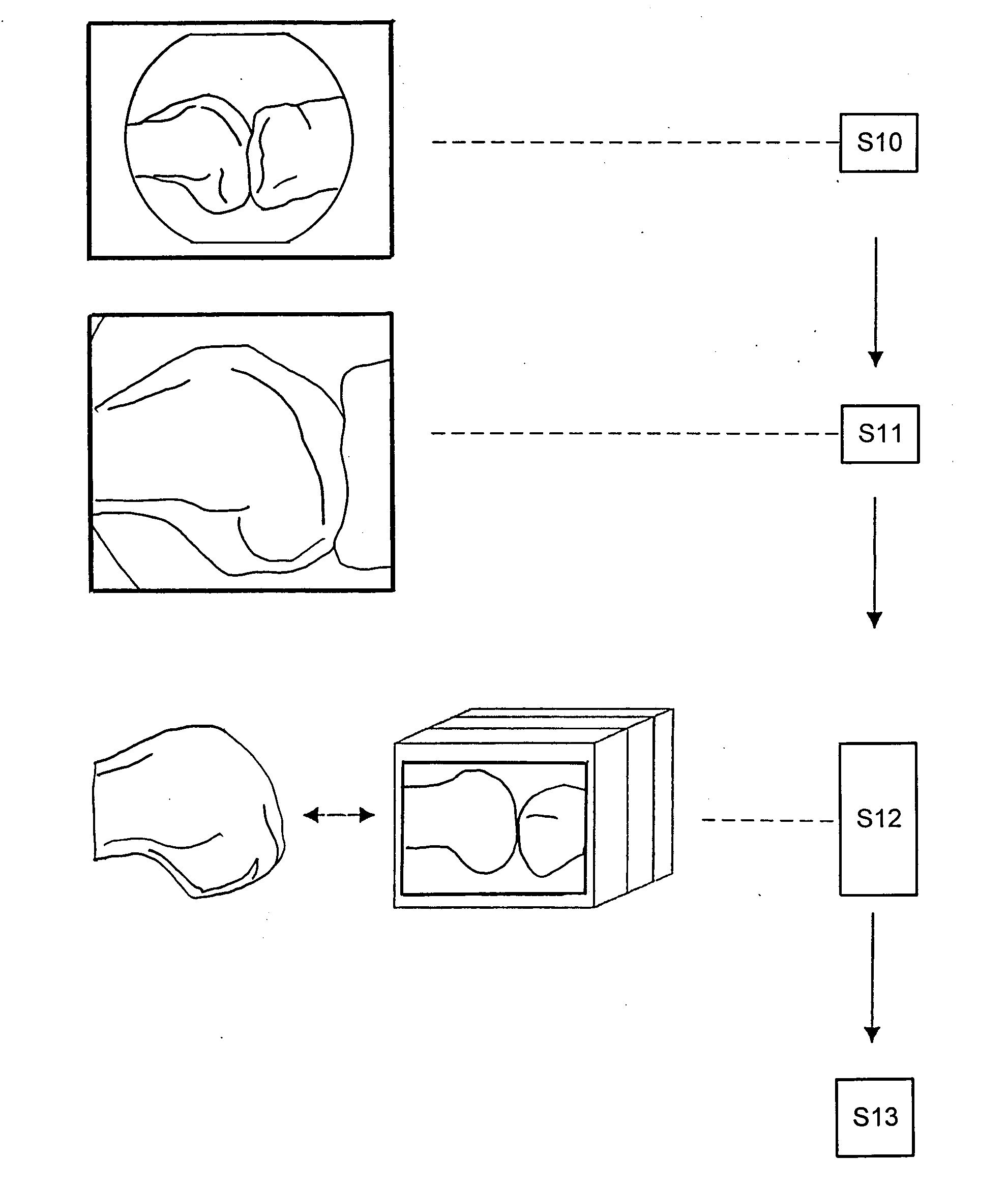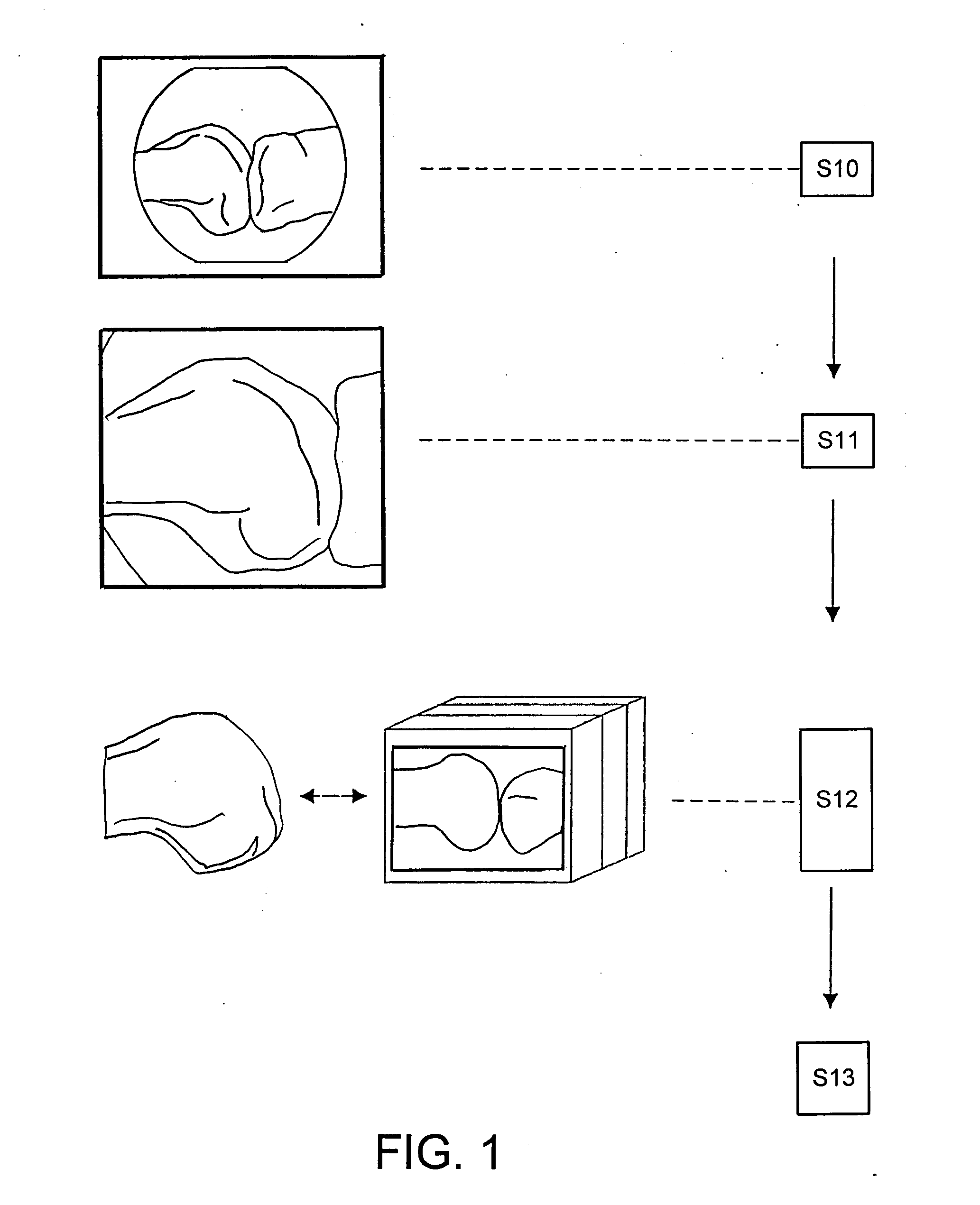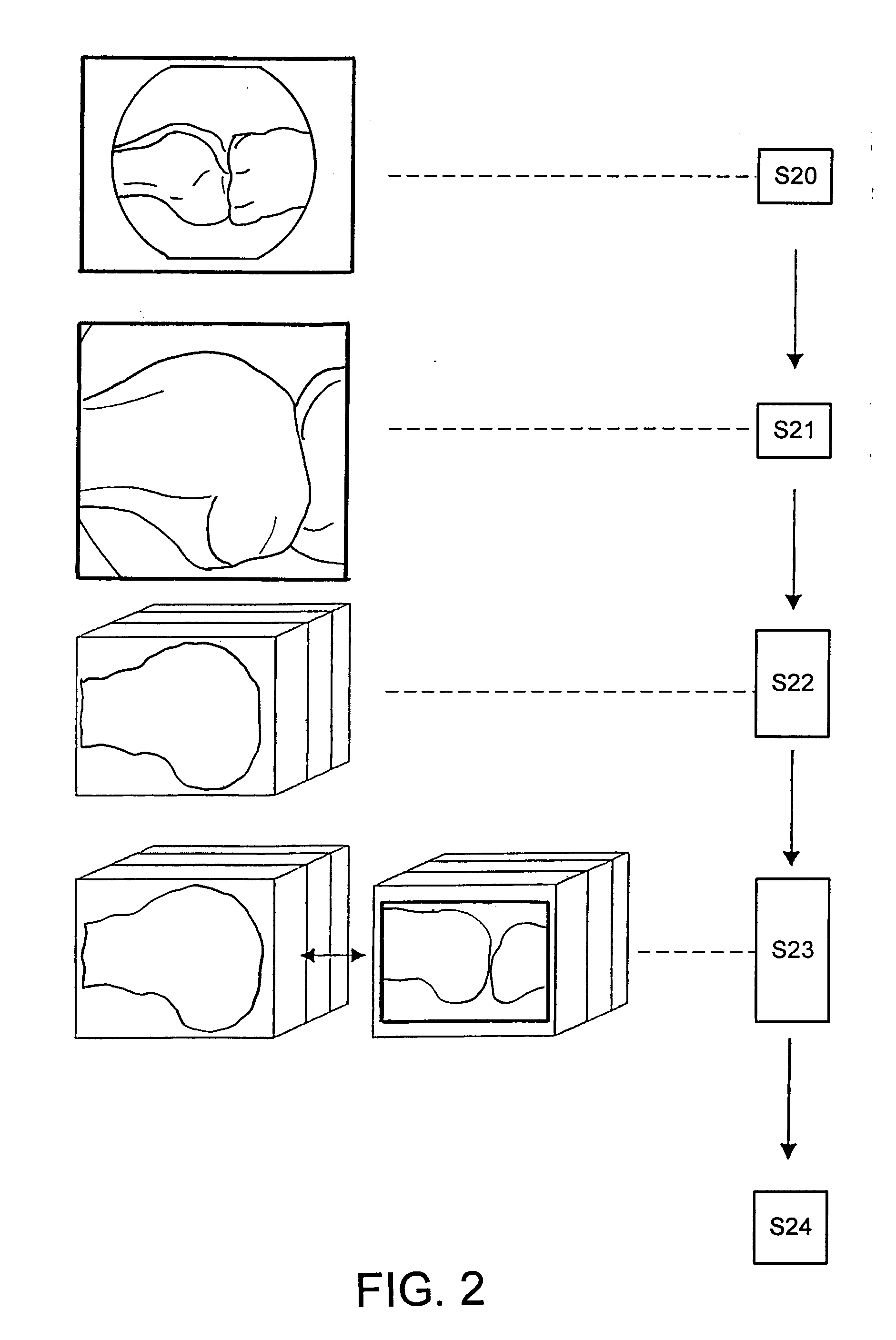Registering mr patient data on the basis of generic models
a generic model and patient data technology, applied in image data processing, diagnostics, sensors, etc., can solve the problems of x-ray radiation used to generate images being a burden on patients' health, bone structures, and generally not being identified or identifiable in mr recordings, so as to enhance navigation accuracy and accurate detection and adjustment of model positions
- Summary
- Abstract
- Description
- Claims
- Application Information
AI Technical Summary
Benefits of technology
Problems solved by technology
Method used
Image
Examples
Embodiment Construction
[0055]FIG. 1 is a flow diagram illustrating a first exemplary method for registering patient data on the basis of generic models. At least two fluoroscopic images of a body region of a patient are initially recorded in step S10. These fluoroscopic images contain patient-specific data such as patient-specific structures or shapes. A non-patient-specific adaptive generic model, which, for example, can include a plurality of data sets such as CT data sets, MR data sets, x-ray data sets or other data sets, is adapted to the fluoroscopic image data in step S11 by means of a transformation protocol. The transformation protocol at least partially adapts the initially non-patient-specific generic model to the actual patient-specific structures apparent from the fluoroscopic images. In the next step, step S12, the generic model, which has already been partially adapted, is registered with respect to a patient-specific MR data set, or conversely, the patient-specific MR data set is registered...
PUM
 Login to View More
Login to View More Abstract
Description
Claims
Application Information
 Login to View More
Login to View More - R&D
- Intellectual Property
- Life Sciences
- Materials
- Tech Scout
- Unparalleled Data Quality
- Higher Quality Content
- 60% Fewer Hallucinations
Browse by: Latest US Patents, China's latest patents, Technical Efficacy Thesaurus, Application Domain, Technology Topic, Popular Technical Reports.
© 2025 PatSnap. All rights reserved.Legal|Privacy policy|Modern Slavery Act Transparency Statement|Sitemap|About US| Contact US: help@patsnap.com



